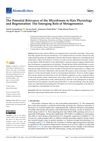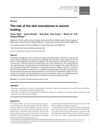Distinct Phenotypic and Genomic Signatures Underlie Contrasting Pathogenic Potential of Staphylococcus Epidermidis Clonal Lineages
August 2019
in “
Frontiers in Microbiology
”
Staphylococcus epidermidis biofilms macrophage milieu microaerophilic lipid-rich environments hair follicles genome-wide association studies antibiotic resistance phenotypic differences genomic differences skin bacteria bacterial biofilms immune cells low oxygen environments fat-rich environments hair roots GWAS drug resistance observable traits genetic traits
TLDR Staphylococcus epidermidis A/C strains are more antibiotic-resistant and infection-adapted, while B strains thrive in hair follicles.
The study examined the phenotypic and genomic differences between Staphylococcus epidermidis clonal lineages A/C and B to understand their pathogenic potential. It involved 83 isolates from various countries and used genome-wide association studies. A/C strains were found to be more resistant to antibiotics and better adapted to infection conditions, such as forming biofilms at blood pH and surviving in macrophage milieu pH. In contrast, B strains were more suited to microaerophilic and lipid-rich environments like hair follicles. The study identified specific genes associated with each cluster, which could serve as epidemiological markers to improve infection prognosis and treatment strategies. The findings highlighted the ecological isolation of the two clusters and their adaptation to different niches on the skin.



